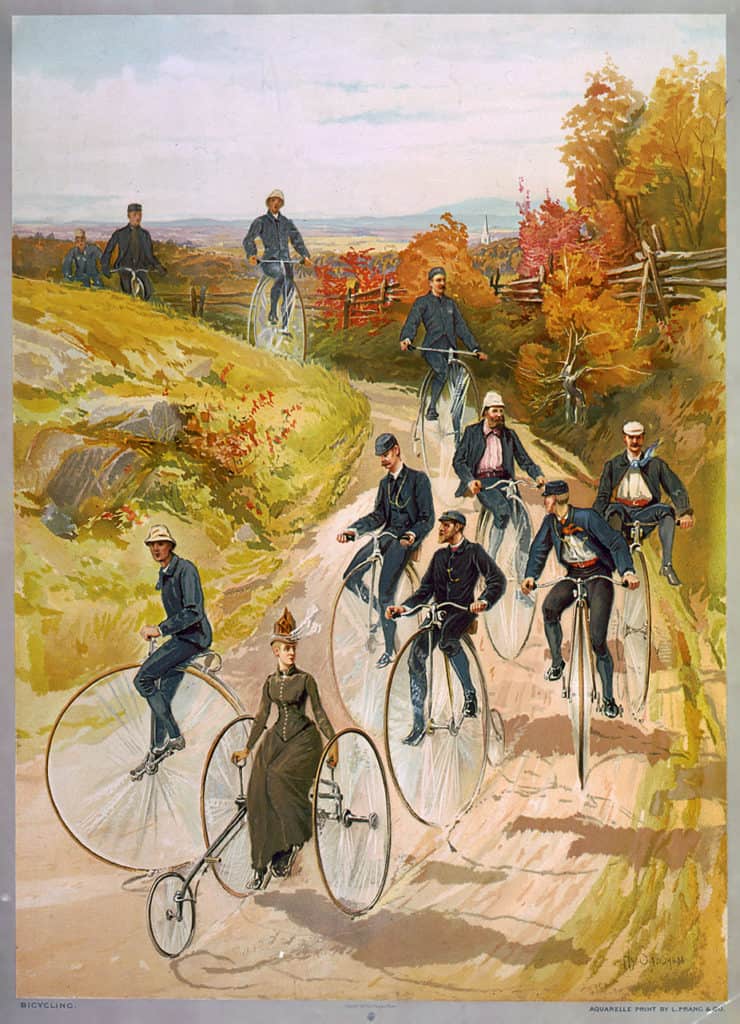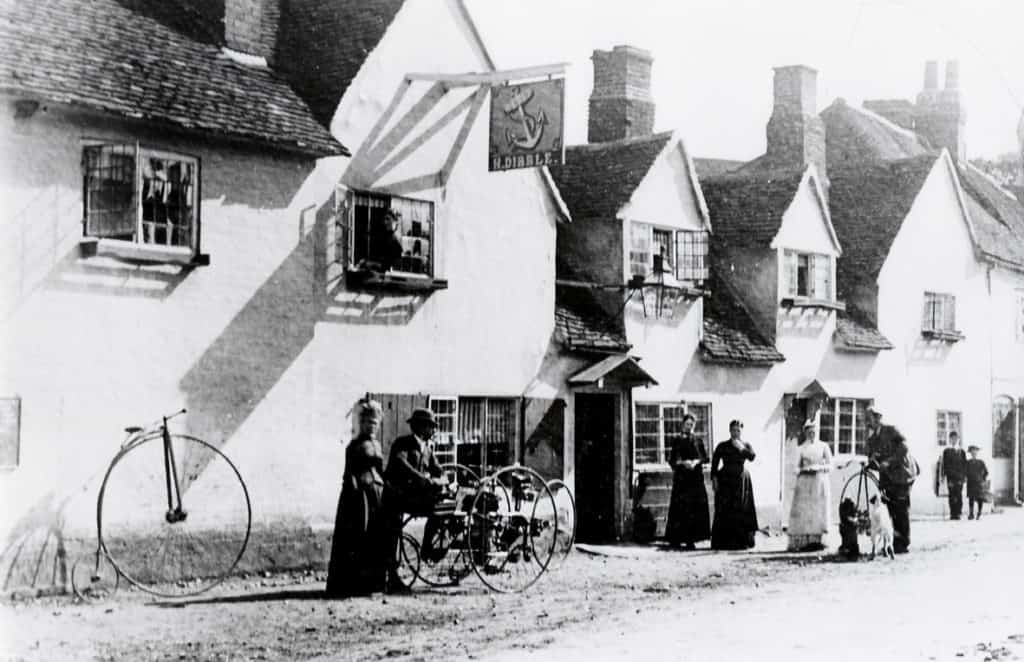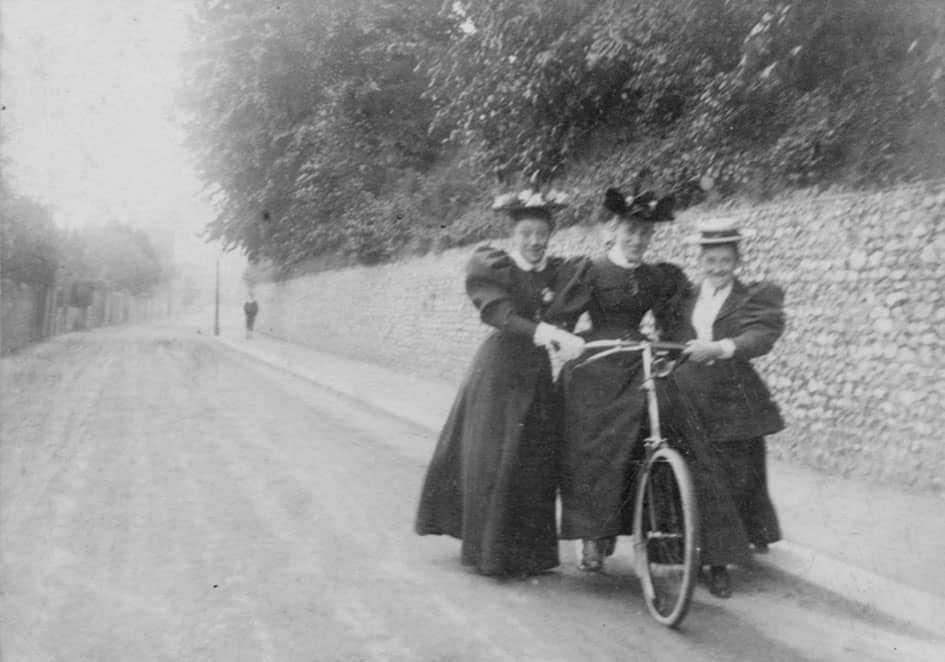Cycling in Victorian Surrey
2012 saw a new era for cycling in the Surrey Hills. Inspired partly by the desire to emulate the feats of the athletes who took part in the Olympic road races, and partly by the beautiful countryside that the aerial television shots revealed on the route, literally thousands of enthusiastic amateurs have flocked to the area ever since. Box Hill is the most popular climb in the World and as of last year over 100,000 enthusiasts had attempted the official segment of the climb more than 770,000 times between them.

But the history of cycling in Surrey goes much further back. The first true bicycle, known as the Velocipede, was invented in 1860 by two Frenchmen, Ernest Michaux and Pierre Lallement. However, it had no brakes and resulted in many treacherous “headers”. The more comfortable, but still dangerous, Penny Farthing was developed in 1870 and the popularity of cycling blossomed alongside the development of more and more sophisticated machines throughout the last 30 years of Queen Victoria’s reign.
By virtue of its Macadam surface the old Portsmouth Road, later to become the A3, was a popular route out of London. Ripley was a convenient distance and was described by Lord Bury in 1887 as “the Mecca of good cyclists”.
One has to admire the courage and endurance of the young men, who took their lives in their hands riding their early primitive cycling machines such a long distance.
It is no small wonder that Mrs Harriet Dibble and her two daughters of the Anchor Hotel in Ripley ran a highly successful business from the mid 1870’s providing refreshments and accommodation to these early pioneers.

Visitors’ books were kept and those from 1881 to 1895 still survive. Some of the books contain over 6,000 entries per year and H G Wells, who was an enthusiastic cyclist, signed one in 1887.
Of course, there were other routes and Dorking was also a major hub. There is a lovely story about one of the first recorded rides in 1875 by a London Draper, Stanley Boorer. He apparently terrified the local housemaids by cycling his “boneshaker” from Denbies to Dorking in the dark with glow worms attached to his hat! Soon the cycles became commonplace and Londoners would pedal down through Morden and Merton, and out via Box Hill to Dorking. By the 1890s the affordable price of a safety cycle, with tyres and a chain, meant the sport grew hugely popular. Dorking Cycling Club was formed in 1887 and had 100 members by 1892.

At first cycling was mostly the domain of young men. Riding in the long heavy Victorian skirts was extremely difficult and dangerous for women, but this did not deter them for long. Although some people were morally outraged, the Rational Dress Society gained much support, promoting knickerbocker suits for ease of movement. In 1898, Richard Cook of the White Horse in Dorking wrote in the Daily Mail that he would not admit women in “rational dress” to his coffee room. He was not alone, but progress could not be held back and soon many were hailing cycling as a great emancipation for women that was nothing short of a “social revolution”.
Several hundred members of cycling clubs from all over the South East came together for a fortnight of competition and excursions in Dorking in the 1890’s, camping at Poultry farm, south of St. Paul’s School. The camps were open to the public and in August 1896 over 6,000 entrance fees were taken. Entertainments included dancing, singing and sports, plus a burlesque sports day with 3-legged races and a tug-of-war. The annual highlight was a torchlight procession through the town with 200-300 cyclists in fancy dress led by a band.
As cycling developed as a sport then so did those that supported it. In 1895, the 24 year old John Dennis opened his “little cycle shop”, United Athletic Stores, near Guildford Bridge. Shortly afterwards he was joined in the business by his younger brother, Raymond. Three years later and sensing the advent of self-powered transport, they launched their own motorised tricycle and by 1901 they were producing cars. Today, Alexander Dennis Limited is a global leader in the design and manufacture of double deck buses and is also the UK’s largest bus and coach manufacturer.
When you next see a group of lycra-clad enthusiasts spinning through the Surrey Hills, spare a thought for those that went before them. A passion for the outdoors and the inspirational beauty of our special landscape is a common thread that draws them together over a span of 150 years.
Gordon Jackson
Acknowledgements
This article is just a short summary of a wealth of facts and stories that survive from the period. We would like to acknowledge the excellent websites of The Surrey History Centre, The Send and Ripley History Society and Dorking Museum that have helped inform this article.
- Cyclists outside the Anchor at Ripley, courtesy of Send & Ripley History Society
- Lady cyclists in Dorking, courtesy of Dorking Museum



